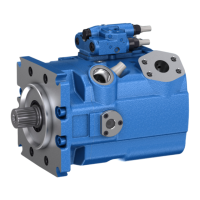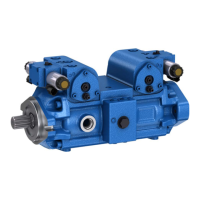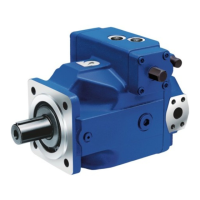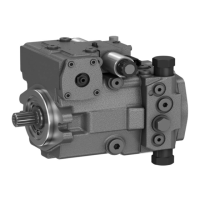RE 92802-01-B/2023-03-27, BoschRexrothAG
Installation | A15VSO/A15VLO series 12 31/60
3� Before installing, completely drain the axial piston unit to prevent mixing with
the hydraulic uid used in the machine/system.
4� Check the permissible direction of rotation of the axial piston unit
(on the name plate) and make sure that this corresponds to the direction of
rotation of the drive motor.
L
R
Fig� 8: Direction of rotation
L
Counter-clockwise
R
Clockwise
The direction of rotation as indicated on the name plate determines the
direction of rotation of the axial piston unit as viewed on the drive shaft;
see chapter 5.3 "Product identication" on page 21. For information on
the direction of rotation of the drive motor, please refer to the drive motor
manufacturer's instruction manual.
7�4�2 Dimensions
For standard versions, the data sheet 92802 contains all required installation
dimensions as well as the position and dimensions of the ports. If necessary,
aninstallation drawing can be requested. Also observe the manuals provided
bythe manufacturers of the other hydraulic components when selecting the
required tools.
7�4�3 General instructions
Follow these general notices when installing the axial piston unit:
• Note that certain installation positions will affect the control system.
Gravity,dead weight and case pressure can cause minor characteristic shifts and
changes in response time.
• Torsional vibrations and speed variations may cause increased rotary angular
acceleration of the rotary group of the axial piston unit. At risk are diesel drives
with asmall number of cylinders and low ywheel mass and toothed belt or
V-belt drives. Belts can lose much of their pre-charge pressure after just ashort
operating time.
An automatic clamping device can lessen the speed variations and vibrations,
and thus avoid subsequential damage.
– When using drives with toothed belts or V-belts, always use an automatic
clamping device.
• On the drive of an axial piston unit, acardan shaft may cause vibrations
and excessive rotary angular acceleration. Depending on the frequency and
temperature, this may cause leaks in the shaft seal and damage the rotary group.

